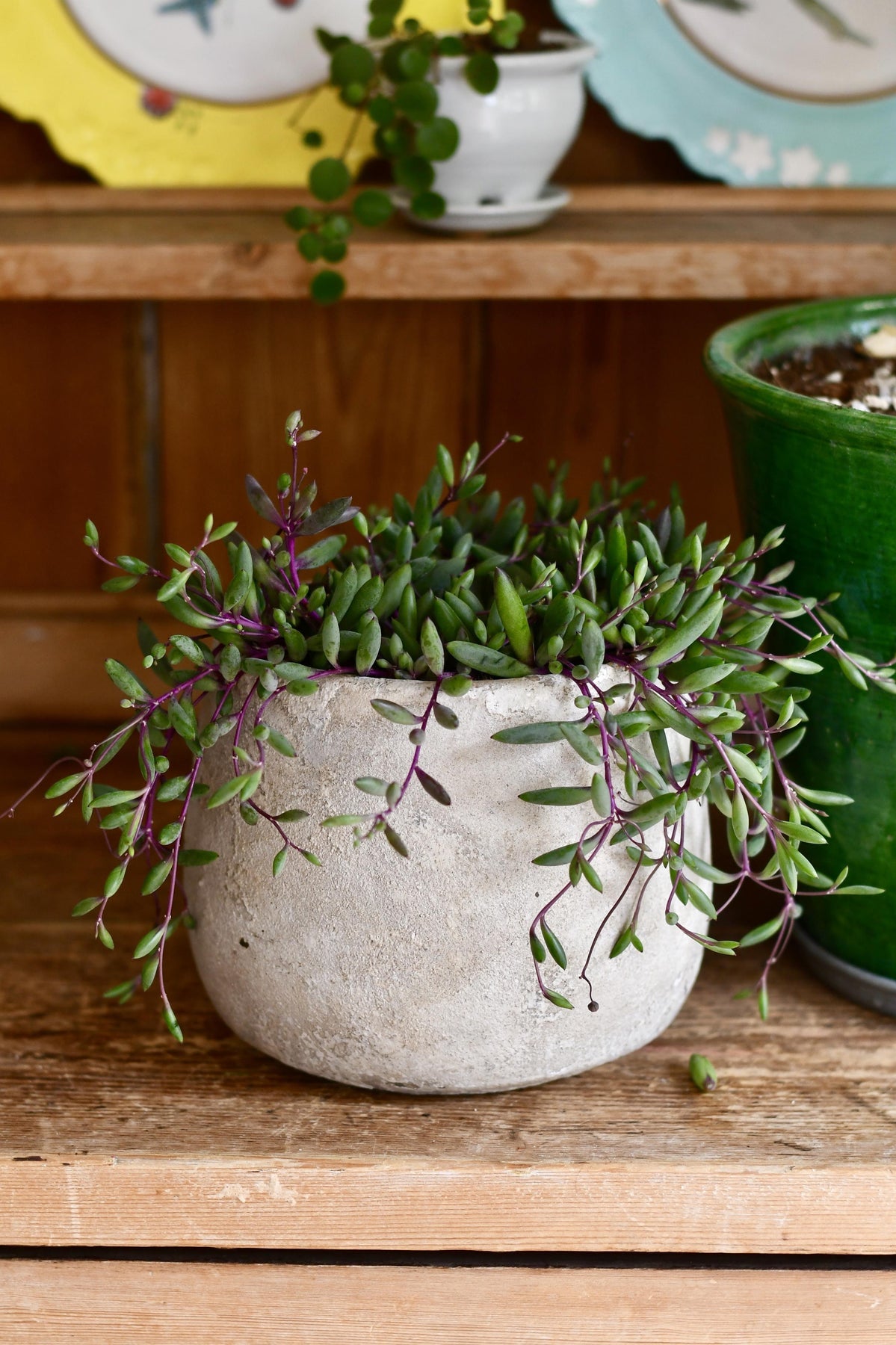Othonna capensis care guide: A beautiful and colourful hanging plant
Othonna capensis, commonly known as Ruby Necklace or Little Pickles, is a charming and resilient succulent that can be a delightful addition to your indoor plant collection. This comprehensive care guide will provide valuable insights and tips to ensure your Othonna capensis thrives and brings a touch of natural beauty to your living space.
Light Requirements: Othonna capensis thrives in bright, indirect light. Place your plant near a south or west-facing window where it can receive several hours of gentle morning or afternoon sun. While it can tolerate some direct sunlight, avoiding intense midday sun is best to prevent leaf scorch. If your plant starts to stretch or become leggy, it may indicate needing more light. Consider using a grow light to supplement its lighting requirements.
Temperature and Humidity: Othonna capensis prefers moderate to warm temperatures ranging between 18°C and 27°C (65°F and 80°F). It can tolerate slightly cooler temperatures during winter but should be protected from frost. This succulent is adaptable to average household humidity levels and requires no specific humidity adjustments.
Watering: Water your Othonna capensis sparingly and allow the soil to dry out between waterings. Overwatering can be detrimental to its health, leading to root rot. Check the soil's moisture level by sticking your finger about an inch deep into the soil. Only water when the soil feels dry at that depth. During the active growing season (spring and summer), water more frequently, but still maintain a cautious approach to avoid excessive moisture.
Soil and Potting: Othonna capensis prefers well-draining soil to prevent waterlogging and promote healthy root growth. A succulent or cactus potting mix is ideal for this plant. To enhance drainage, you can also create your own mix by combining regular potting soil with perlite or coarse sand. When repotting, choose a container with drainage holes to ensure excess water can escape.
Fertilising: Othonna capensis is a relatively low-maintenance plant for fertilising. You can feed it with a balanced, water-soluble fertiliser diluted to half the recommended strength during the active growing season. Apply the fertiliser once a month or every six weeks. Reduce or cease fertilisation during winter as the plant's growth slows down.
Propagation: Othonna capensis can be propagated from stem cuttings. Select a healthy stem and use clean, sharp shears to cut a piece around 3-4 inches long. Allow the cutting to dry for a day or two to form a callus, and then plant it in a well-draining succulent mix. Water sparingly until roots develop, which usually takes a few weeks.
Pruning: Pruning is not typically necessary for Othonna capensis, but you can trim back any leggy or elongated stems to encourage bushier growth. Use clean, sharp pruning shears and cut just above a leaf node. Pruning can be done throughout the year as needed.
Pests and Diseases: Othonna capensis is generally resistant to pests and diseases. However, occasionally, it may be susceptible to common succulent pests such as mealybugs or spider mites. Regularly inspect your plant for any signs of infestation, such as webbing, sticky residue, or small insects.
With its unique trailing stems adorned with vibrant ruby-coloured leaves, Othonna capensis is a captivating succulent that will add a touch of natural beauty to your indoor garden. By providing it with the right amount of light, water, and care, you can enjoy the elegance of this plant for years to come. Happy growing!
Common Questions about Othonna capensis (Ruby Necklace/Little Pickles):
How often should I water my Othonna capensis? Water your Othonna capensis sparingly, allowing the soil to dry out between waterings. Adjust the frequency based on the season and environmental conditions.
What type of light does Othonna capensis prefer? Othonna capensis thrives in bright, indirect light. Place it near a south or west-facing window where it can receive several hours of gentle morning or afternoon sun.
How do I propagate Othonna capensis? Othonna capensis can be propagated from stem cuttings. Take a healthy stem cutting, allow it to dry for a day or two, and plant it in a well-draining succulent mix until roots develop.
What is the best temperature range for Othonna capensis? Othonna capensis prefers moderate to warm temperatures between 18°C and 27°C (65°F and 80°F). Protect it from frost and avoid exposing it to extremely cold temperatures.
How often should I fertilise my Othonna capensis? Fertilise your Othonna capensis once a month or every six weeks during the active growing season with a diluted, balanced, water-soluble fertiliser. Reduce fertilisation during the winter.
Is Othonna capensis prone to any pests or diseases? Othonna capensis is generally resistant to pests and diseases. However, keep an eye out for common succulent pests like mealybugs or spider mites and take appropriate measures if needed.
Can Othonna capensis tolerate low humidity? Othonna capensis can adapt to average household humidity levels and doesn't require any specific adjustments. It can tolerate a range of humidity conditions.
How do I prune my Othonna capensis? Pruning is not typically necessary, but you can trim back leggy stems to encourage bushier growth. Use clean pruning shears and make cuts just above a leaf node.
What is the typical growth rate of Othonna capensis? Othonna capensis has a moderate growth rate. With proper care, it can develop long, trailing stems adorned with ruby-coloured leaves, creating an attractive cascading effect.
Suppose you want to expand your plant collection or find other captivating succulents to complement your Othonna capensis. In that case, we invite you to explore the wide range of options available at Happy Houseplants. We offer a remarkable selection of healthy and well-cared-for plants, along with all the accessories you need for successful succulent care.












Beautiful houseplant, so bonny xxxxxx
Leave a comment